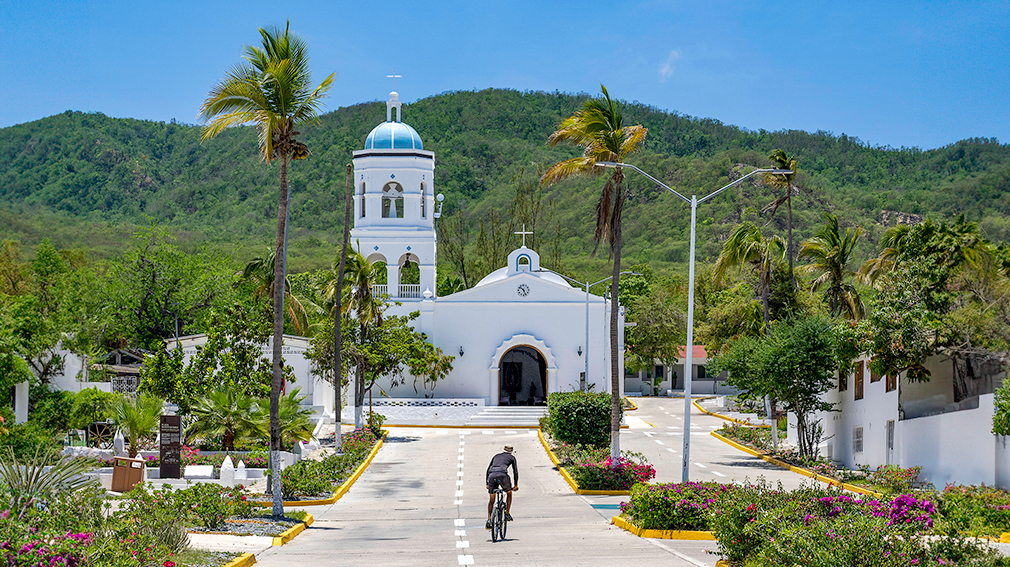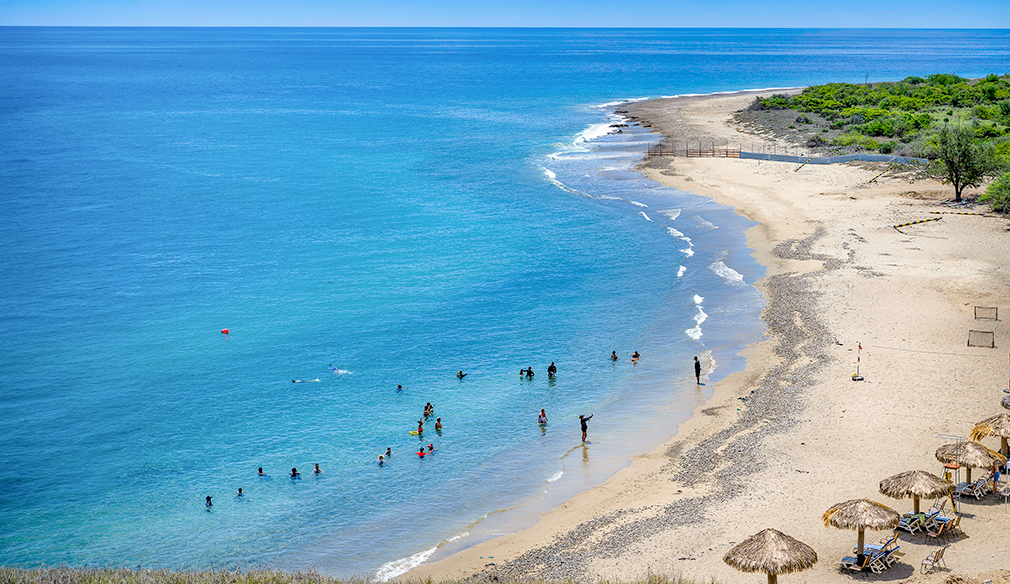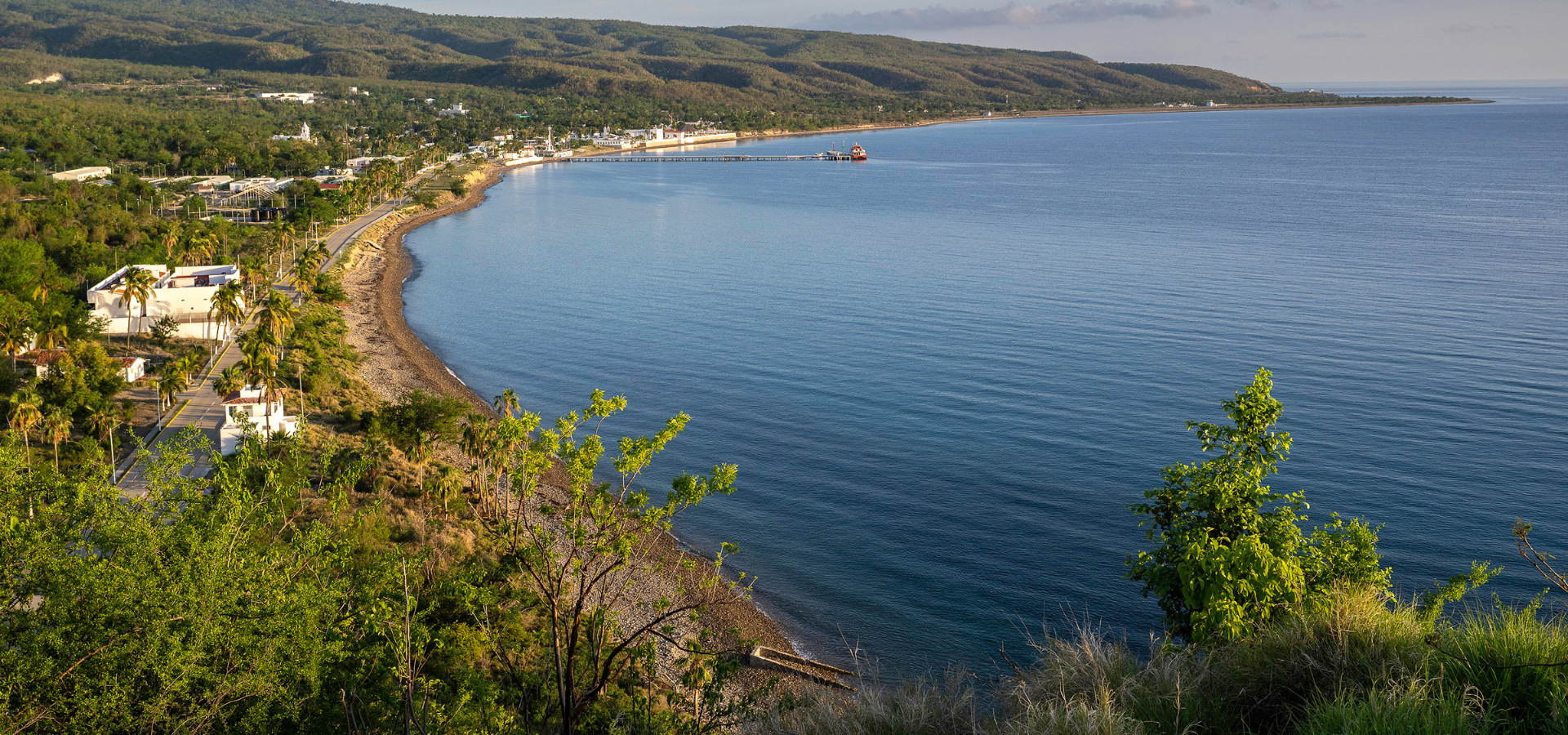The Mexican state of Nayarit is full of hidden treasures—some only accessible by boat, bike, or on foot.
Take El Salto Waterfall, for one. It takes a 30-minute hike from the end of a dirt road on the outskirts of the Spanish-colonial town of Jala to reach this dramatic waterfall, which drops from a height of nearly 100 feet. The waterfall springs to life during the rainy season, from June to September. Jala, located in the shadow of El Ceboruco Volcano, is well worth a visit to stroll its cobblestone streets, three with historical heritage designations. Most roads lead visitors to the iconic Our Lady of the Assumption Lateran Basilica. Inside, a dome and Ionic and Corinthian columns stretch to the sky.

A block from the church is the Quinta Nukari Boutique hotel, one of the Hoteles Boutique de Mexico, a collective of small boutique hotels. The hotel’s al fresco rooftop restaurant Nukari is ideal for watching the sunset, cocktail in hand. The region favors the more smokey, caramelized flavor of mezcal over tequila as the go-to spirit.
Eighty miles to the northeast is the port city of San Blas, home to one of the largest protected natural areas in Mexico. Boats navigate the serpentine waterways of La Tovara National Park through dense mangroves, which a wide variety of wildlife call home, including garza canela (boat-billed heron) and crocodiles. The edges of the day offer the most intense shows that nature can offer.

San Blas is also one of the two oceanic gateways to Isla Maria Madre, the largest island in the Marias Islands archipelago. The island served as a prison from 1905 until 2019, and an estimated 30,000 prisoners passed through this feared detention center to face violence, disease, and forced labor. Some of the most infamous prisoners included renowned violinist Elias Breeskin, Leon Trotsky’s assassin Ramon Mercader, novelist Jose Revueltas, and Jose Ortiz Munoz, a serial killer better known as El Sapo.
With its location 62 miles off the mainland, Islas Marias Federal Prison, also known as the Islas Marias Federal Penal Colony, was considered escape-proof. Yet more than 70 prisoners attempted escapes in just the last four decades of the prison’s existence—and only a handful were caught.
Since its closing in 2019, the island has since been reimagined as an all-inclusive holiday resort. Visitors arrive by ferry in Isla Maria Madre’s Puerto Balleto and are housed in newly refurbished mini apartments, where some of the more well-behaved prisoners once lived.

A museum in an old fort tells the story of the islands from when the first European, Diego Hurtado de Mendoza, discovered the archipelago in 1532 and named it Islas Magdalenas. He and his crew found no evidence of prior habitation.
Several tours are included for visitors to the island, ranging from early morning hikes to a towering statue of Jesus and a lighthouse, both built by prisoners, to a sobering tour of the abandoned supermax prison.

While many of the beaches on the island are off-limits to protect this biosphere, one of the beautiful exceptions is at Chapingo. Visitors to the island are free to visit this remote beach as they wish for a little relaxation under the sun—unlike the island’s previous “guests.”

The international gateway to Nayarit is Puerto Vallarta in neighboring Jalisco state. A good place to begin or end an exploration of Nayarit is just across the state border, in the Bohemian surfing town of Sayulita, which offers beachfront restaurants, cafes and inviting waves.










